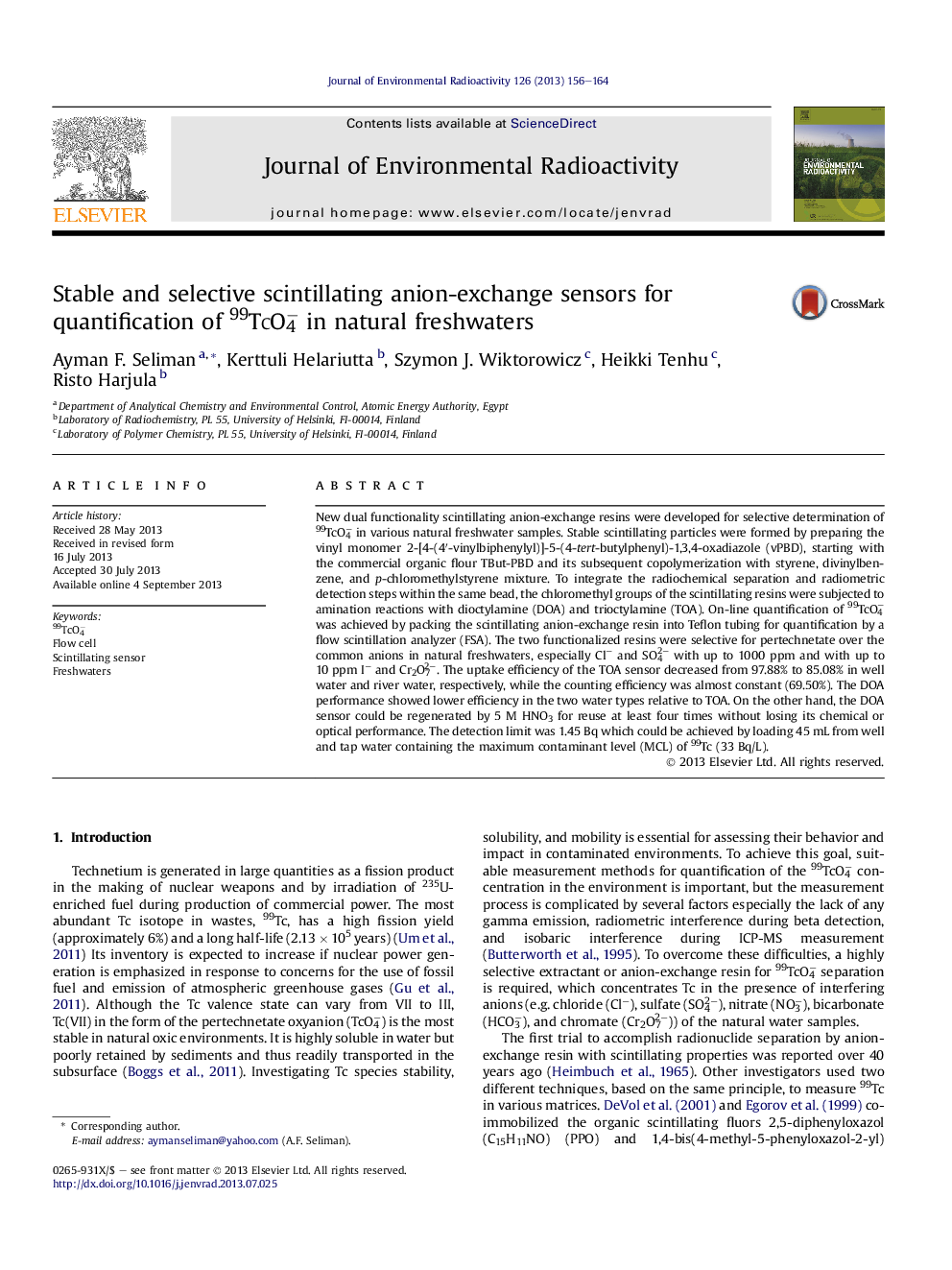| Article ID | Journal | Published Year | Pages | File Type |
|---|---|---|---|---|
| 8083293 | Journal of Environmental Radioactivity | 2013 | 9 Pages |
Abstract
New dual functionality scintillating anion-exchange resins were developed for selective determination of 99TcO4â in various natural freshwater samples. Stable scintillating particles were formed by preparing the vinyl monomer 2-[4-(4â²-vinylbiphenylyl)]-5-(4-tert-butylphenyl)-1,3,4-oxadiazole (vPBD), starting with the commercial organic flour TBut-PBD and its subsequent copolymerization with styrene, divinylbenzene, and p-chloromethylstyrene mixture. To integrate the radiochemical separation and radiometric detection steps within the same bead, the chloromethyl groups of the scintillating resins were subjected to amination reactions with dioctylamine (DOA) and trioctylamine (TOA). On-line quantification of 99TcO4â was achieved by packing the scintillating anion-exchange resin into Teflon tubing for quantification by a flow scintillation analyzer (FSA). The two functionalized resins were selective for pertechnetate over the common anions in natural freshwaters, especially Clâ and SO42â with up to 1000Â ppm and with up to 10Â ppm Iâ and Cr2O72â. The uptake efficiency of the TOA sensor decreased from 97.88% to 85.08% in well water and river water, respectively, while the counting efficiency was almost constant (69.50%). The DOA performance showed lower efficiency in the two water types relative to TOA. On the other hand, the DOA sensor could be regenerated by 5Â M HNO3 for reuse at least four times without losing its chemical or optical performance. The detection limit was 1.45Â Bq which could be achieved by loading 45Â mL from well and tap water containing the maximum contaminant level (MCL) of 99Tc (33Â Bq/L).
Keywords
Related Topics
Physical Sciences and Engineering
Energy
Nuclear Energy and Engineering
Authors
Ayman F. Seliman, Kerttuli Helariutta, Szymon J. Wiktorowicz, Heikki Tenhu, Risto Harjula,
